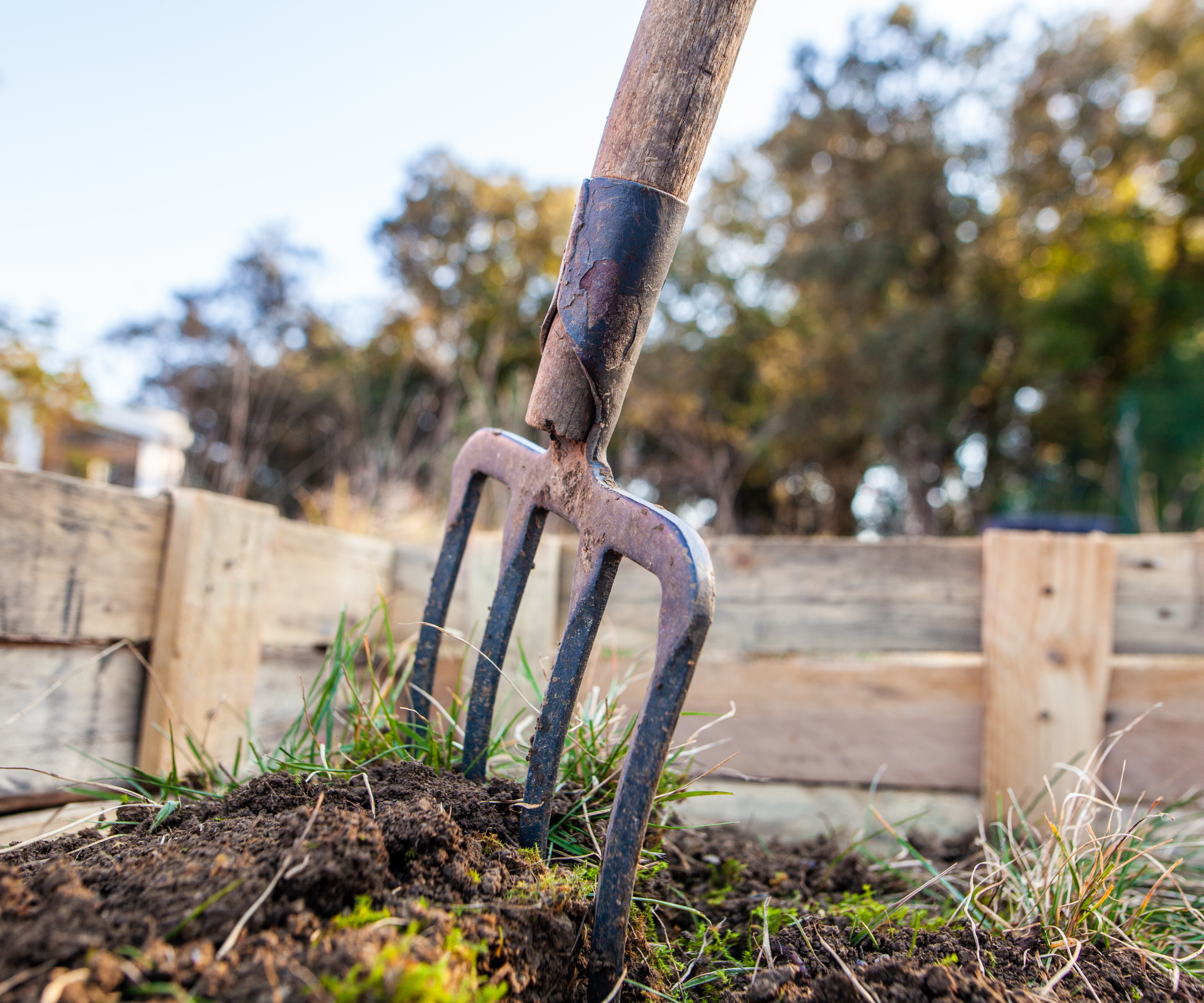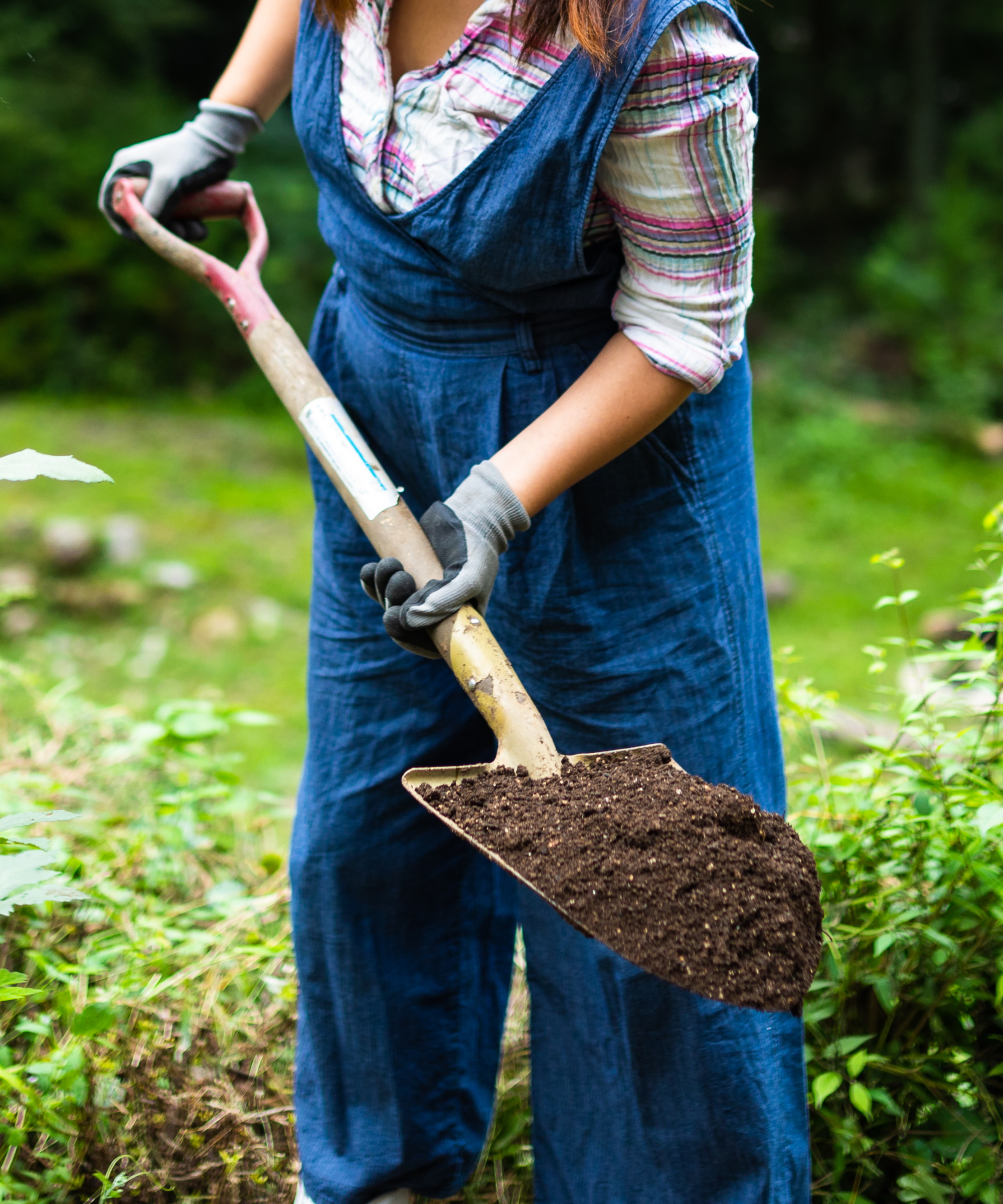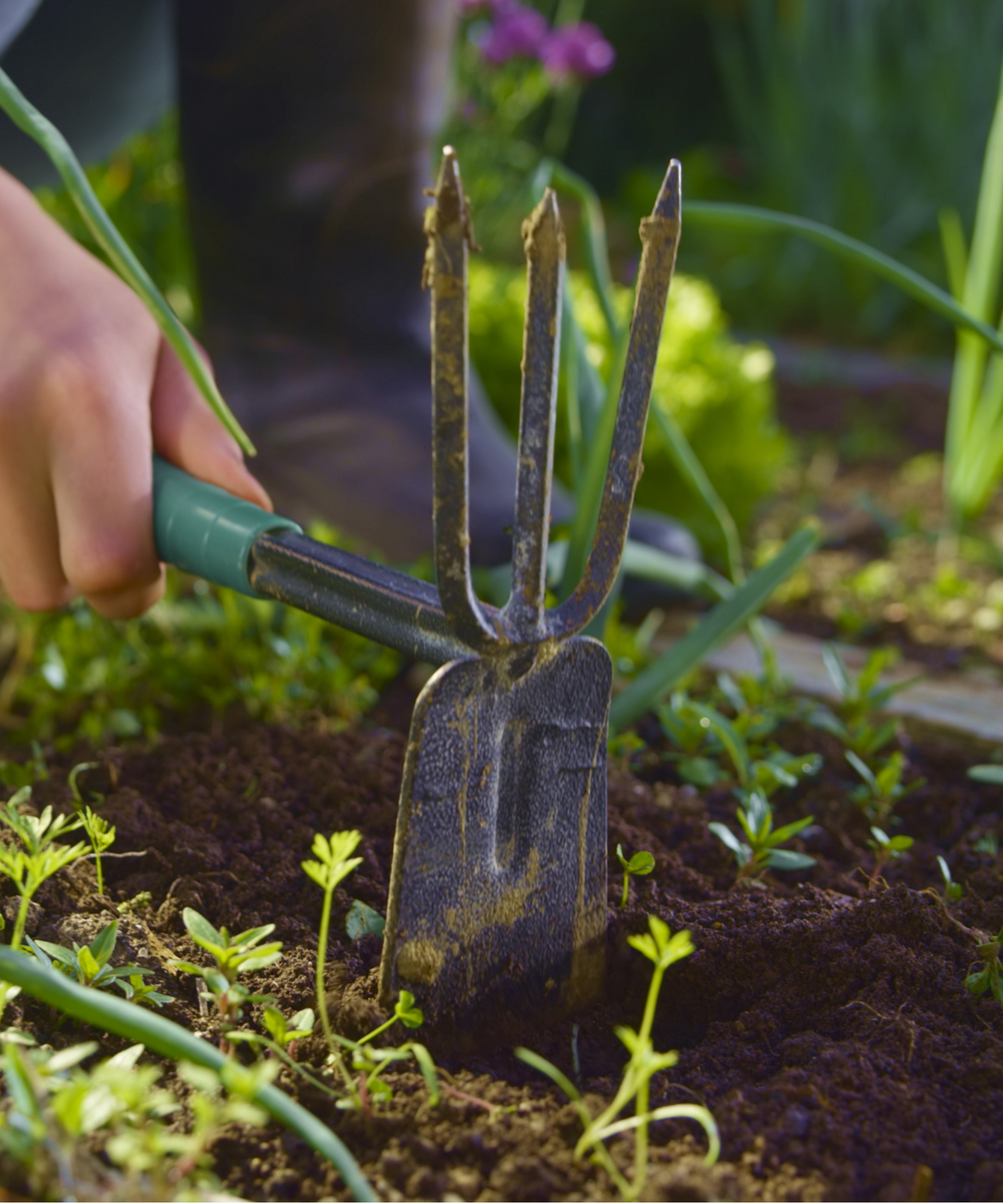
The world of gardening can be daunting when you're first starting out, especially when you're trying to nail down which garden idea to pursue and all the essential gardening tools you need to make it happen. Even if you're a seasoned gardener with years of growing experience, it still pays dividends to have the right tools to hand for the job.
Just like the botanical names of plants, you might hear of some garden tools that sound like a completely different language to you. Figuring out what they're used for, and why they are so useful, isn't always easy in the first instance.
Luckily, we've gathered advice from professional gardeners and put together an expert list of essential gardening tools every gardener should have in their toolkit, so that you be prepared for every season.

10 essential garden tools
New to gardening or simply want to know more about the different tools you need to maintain your backyard? Don't worry, our expert list of essential gardening tools has got you covered.
1. Gloves

Safety is always a priority and gardening gloves are designed with that in mind.
'Most gardeners have multiple pairs ranging from simple lightweight, breathable cloth gloves to protect from developing blisters while working with hand tools, to more substantial leather gloves designed to avoid cuts and abrasions when pruning prickly plants,' says Dr. Mike Arnold, professor of landscape and horticulture at the Texas A&M Department of Horticultural Sciences.
Gardening offers exercise and in many ways it is green therapy for both physical and mental wellbeing, but the strenuous tasks can take a toll on your hands. It's important to have the right pair of gloves for the type of work you are doing.
'Latex, rubber or butyl gloves are also essential PPE (personal protective equipment) when mixing various pesticides or other garden chemicals,' Mike adds.
These wonder grip gloves are lightweight and comfortable. The dipped palms ensure you don't lose your grip while working.
These knit work gloves are great for shovelling, handling small parts, picking fruits and vegetables, repair jobs and other gardening jobs.
Keep your hands protected with these gardening gloves that have leather palms and fingers. The material is durable and will withstand heavy-duty gardening tasks.
2. Goggles

Another piece of garden safety equipment - goggles. These are essential for protecting your eyes during those tasks where small bits of foilage and other garden waste may be flying around you.
'Any use of power hand tools or when pruning with mechanical tools should involve the use of eye protection,' says Dr. Mike Arnold. 'This is also important when using powered devices such as mowers, shears, edgers and blowers,' he adds.
You should also take care to protect your eyes when mixing and working with different garden chemical products.
There are plenty of eye protection products available on the market, such as these safety goggles from Amazon or these splash safety goggles from Walmart.
3. Watering can or hose

One key thing your plants need to survive is water and before you can learn how to water your plants, you need the right equipment - a watering can or hose.
'Watering hoses and cans allow for controlled and targeted watering, ensuring plants receive adequate moisture,' says Alex Kantor, owner of Perfect Plants Nursery.
Whether you have a container garden or large areas of lawn to water, there are many different kinds of hoses and cans with different spouts to fulfil your gardening needs.
'An alternative suggestion could be a drip irrigation system, which provides efficient and water-saving automated watering,' suggests Alex. There are lots of ways to create watering systems that help save water in the garden.
If you're more of an urban gardener with many indoor plants, a watering can with a narrow spout is ideal for watering houseplants.
Beautiful watering can made from high-quality, galvanized metal. This watering can is rust-proof and has a removable spout.
The length of this flexible garden hose expands to 100 ft when water is turned on and quickly shrinks back to a compact size for storage when the water recedes.
This golden watering can brings a touch of elegance, while its slender handle and spout make it easy to distribute water exactly where it needs to go when watering indoor plants.
4. Pruning shears and loppers

For your yard cutting needs, it's important to have shears. There are a few different kinds of shears depending on what you need to use them for, but they all have the same purpose to help you with cutting - whether its pruning trees or edging lawns.
'Most gardeners will own several pairs of pruning shears to adapt to the multiple pruning needs in the garden,' says Dr. Mike Arnold.
For larger jobs, like pruning hedges, you may find loopers with long handles helpful for reaching up high. Meanwhile, handheld shears, like secateurs, can make it easier to prune smaller stems and branches.
'Sharp blades make pruning easy, while dull blades or poor ergonomics in the handles can make pruning a chore,' says Mike.
'Loopers are preferred for stems greater than about a half inch in diameter and give much more leverage for cutting,' he adds.
It's best to do some research around the tasks you need to do for your specific plants to find out which type of shears will best assist you.
These garden loppers have blades made of SK5 steel which helps to prune branches quickly. Protective coating on the surface of the blade prevents rust and keeps them durable.
Pruning shears with a steel blade. The handle is vinyl coated to prevent slipping and for a tighter grip when working.
Sharp, hardened carbon steel blades that will stay sharp for a long time. These loppers provide clean cuts in an effective manner, with a compound mechanism fir easy pruning.
5. Trowel

When it comes to all your digging and planting needs, a hand trowel is essential. It's a tool with a pointed tip and curved blade for scooping.
'It is used for digging, planting, and transplanting plants,' says Alex. 'Trowels are also handy for loosening soil, removing weeds, and adding soil amendments.'
There are many types of trowel to choose from. 'Two critical factors in choosing a trowel are comfort of the handle, which will often depend upon the gardener's grip size, and the metal quality in the blade and handle,' says Dr. Mike Arnold.
This tool gets used frequently in the backyard, so it's key to find one of good quality to last for longer.
This 12-inch trowel has non-rusting aluminium and is durable. The red handle has ridges for comfort while working.
This wide, deep dish trowel allows for maximum load. The neck is precision forged at an optimal angle for ergonomic working.
This hand trowel has an ergonomic design to make digging easier. Designed to last for a long time and reduce fatigue.
6. Fork

If you're battling with harder soil that needs loosening, a garden fork is your new best friend. This is a tool with multiple sturdy tines, available in a range of handle lengths.
'It's ideal for preparing garden beds, breaking up clumps and aerating the soil,' says Alex. 'The fork can also be used for lifting and moving bulky materials like compost and mulch,' he adds.
You can use smaller handheld forks for precise work with more grip, or a garden fork with a long handle that allows you to use more force with your foot.
'A stout fork with fairly short, broad, sharp edged prongs is desirable for use in turning soil or mixing in compost,' says Dr. Mike Arnold. 'Alternatively, a thinner pronged fork with longer prongs would be desirable for spready straw or other mulching materials,' he adds.
This garden fork has a wooden handle with four tines to help dig deep into the soil. It has an ergonomic design that is durable and helps make garden tasks easier.
This hand gardening fork easily goes through the ground to digs deep under the weed and give more reach and leverage. The sharp and sturdy three tines help to break through hard soil.
This spading fork is highly versatile. Designed for digging, turning and aerating soil in beds and gardens. The four tines break through tough soil and clay.
7. Spade

Spades are highly valuable tools to have in your shed to help with digging and shovelling. Many gardeners will have multiple spades for different uses, as they come in different sizes and shapes.
'A steel flat bladed spade is often used for turning soil, digging holes or trenches or cutting through tough soil or roots,' says Dr. Mike Arnold. 'A narrow long bladed spade is often used for digging trenches for running irrigation lines, drainage lines or French drains,' he adds.
Perhaps the most common type of spade is a rounded one, ideal for shovelling soil and mulch.
'The key is choosing the right spade for the job, investing in sturdy materials, keeping edges sharp and cleaning the spade after uses to avoid rusting which makes digging more difficult,' says Mike.
This Landscapers Select garden spade has a 7-inch wide, steel blade with a wooden D-shaped handle to help with good grip.
This round garden spade is ideal for shovelling. The D-shaped handle increases grip to make digging easier.
The garden spade has a wooden handle and a durable, tempered steel blade. Ideal size for working in tight spaces.
8. Weeder or hoe

Sometimes getting rid of weeds can be a difficult task, especially if you're dealing with stubborn ones. Using a garden hoe or weeder can help you make this a quicker task.
'A weeder or hoe is a tool used for removing weeds from the garden. They have sharp blades that slice through weed roots and help keep the garden weed-free,' says Alex.
'Weeding tools come in different shapes and sizes, such as hand weeders, long-handled hoes or stirrup hoes,' he adds.
There are lots of different kinds of weeding tools that can assist with different size spaces, whether its removing weeds from lawns or smaller weeds in paving.
This garden hand hoe is heavy duty, made from steel. It is durable and can be used for weeding, planting and more. This tool is powder-coated to prevent rust.
This garden hoe has a fiberglass handle and a steel blade. It is 58.25 inches long and perfect for weeding jobs in the backyard.
This garden hoe is a versatile tool, perfect for weeding, loosening soil and digging. It is double-sided so you can have a 2-in-1 tool when working in the garden.
9. Bulb planter

It's rewarding to see those spring bulbs bloom as the weather warms up, especially after carrying out the task of planting each one. If you want to save some time digging holes for your bulbs or want to achieve a more uniform look, a bulb planter can help.
'This nifty hand tool creates consistent planting holes, ensuring bulbs are placed at the right depth for proper growth and bloom,' says Ashleigh Smith, horticulturist at True Leaf Market. 'It's especially helpful when planting large quantities of bulbs,' she adds.
It's a handy tool to have to tackle your fall gardening checklist and get your spring bulbs planted in time t bloom.
This bulb planter is ergonomically designed to making bulb planting easy. It's lightweight and easy to carry around the garden.
This bulb planter is a 5-in-1 tool. It can help with planting bulbs, removing weeds, sampling soil and more.
This stainless steel bulb planter is rust-resistant. It has an ergonomic design with a nonslip handle to provide easy grip.
10. Rake

The last essential you need in your gardening toolkit is a rake. This is especially useful for your fall clean-up, removing fallen leaves from your backyard.
'Different rakes are designed for different purposes,' says Alex Kantor. 'Most gardeners have at least two types: one with rigid downward, short sharp tines to rake soil or gravel, and one with more numerous thin flexible tines in a fan-shaped spray used to rake lighter materials such as leaves and trash,' he adds.
Gardening is far from a tidy hobby, so it's useful to have these tools around for quick clean-ups.
This garden rake has 25 metal tines and is suitable for heavy-duty lawns. It is sturdy and durable to clean debris and leaves efficiently.
This heavy-duty garden rake has 17 steel tines to gather leaves and other debris effectively. The handle is stainless steel and has an anti-rust coating.
A compact, 8-inch head rake. This is ideal for raking in right spaces between plants in your backyard. The durable poly tines are flexible under pressure.
FAQs
How do you clean garden tools?
It's very important to keep garden tools clean to expand their lifespan and reduce risk of passing on harmful bacteria to your plants. You can clean garden tools in different ways. For example, to remove rust you could use a brass brush and vinegar. You can also oil any wooden handles annually to keep them clean and prevent them from cracking. Make sure to keep on top of cleaning your garden tools to keep them in pristine condition and make your gardening tasks easier.
If you feel lost when it comes to the essential gardening tools, these 10 pieces of equipment are a good place to start. Each tool serves a different purpose and will ensure you complete your gardening tasks safely and efficiently. Take care to organize your shed carefully so that you can store your tools in a safe manner that will keep them in good condition for longer.







